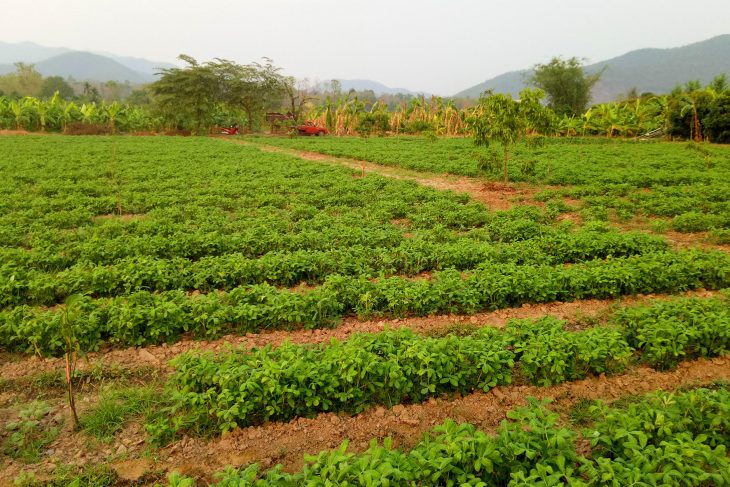Approximately one quarter of Mexico’s 130 million people live in rural areas, and depend primarily on agriculture. Incomes in farming tend to be low, only about a third of the national average, and agriculture contributes only 5% of the national GDP. In the north and north-east, the farms are mostly large and irrigated, producing a wide variety of crops including wheat, sorghum, oilseeds and vegetables. Over half of Mexico’s cropland lies in the central highlands. Here, small-scale farmers grow mostly maize and beans, their output heavily dependent on irregular rains. What irrigation there is comes from surface storage, so is also rainfall dependent. Around Mexico City farmers grow feed grains, oil seeds, fruit and vegetables, and the tropical regions of the south produce coffee, rice, sugarcane and bananas.
Some 50% of Mexico’s agricultural land is held by communal farms, called ejidos. This system was set up in the early 20th century, when large private land holdings were redistributed to peasant co-operative groups, as a way of guaranteeing them livelihoods and pacifying the rural areas. However the ejidos system also had the effect of tying people to the land, since plots could not be sold or rented, and as the population grew so individual allocations shrank. Capital investments in the farms were also poor, as the communally held land could not be used as collateral for loans, and this combination of small size and low investment led inevitably to low productivity.
In the last twenty years the agricultural sector has undergone major reform. Before the 1980s Mexican governments had pursued a policy of self-sufficiency in staples, paying farmers twice the world price for their maize, and heavily subsidizing inputs such as fertilizer and irrigation. Following debt problems in the early 1980s, price supports were progressively removed, and a fifteen year transitional programme, called Procampo, has been put in place, to help staple commodity farmers to make the shift from protected to open market production. The programme gives fixed payments on a per hectare basis, in the hope that farmers will use this money to modernise their production. Farmers are free to grow alternative crops, or diversify into livestock, forestry, ecological or aquacultural activities, and still receive the direct payment. In this way the government hopes to move agriculture away from self-sufficiency towards exports. The ejidos system has also been reformed in a bid to increase farm sizes, with co-operatives now having the right to sell or rent their land.
The creation of the North American Free Trade Area in 1994 has further pushed agricultural policy towards export production. 78% of Mexico’s agricultural exports now go to the United States, predominantly fruit, vegetables, live cattle and coffee. Vegetables such as Chinese eggplant and broccoli are grown in northern provinces to supply the American Asian market, and production has been boosted by support from US importers. Under its umbrella agricultural policy, called the Alliance for the Countryside, the government has targeted various technical developments, including water distribution and irrigation systems, genetic enhancement of livestock, tractor purchase and repair programmes, and hybrid seed exchange for maize growers.
Source: The new Agriculturist



